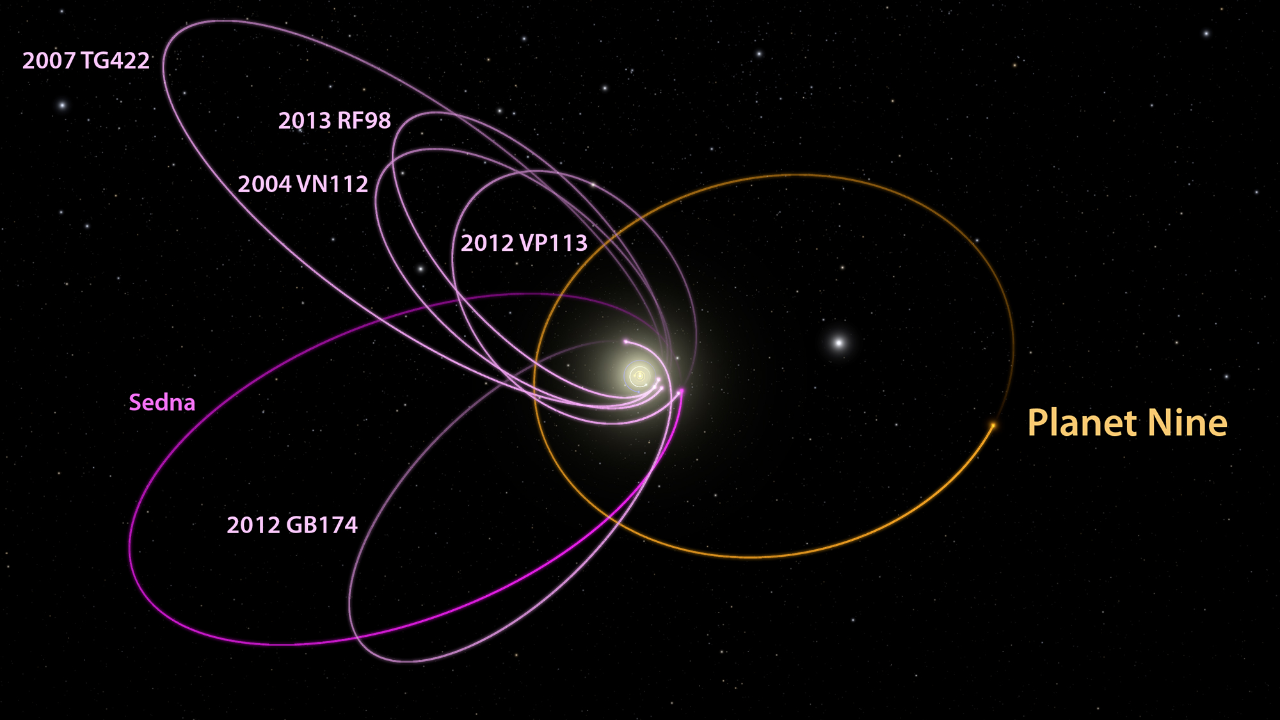Rapid Fire
New Dwarf Planet and Planet Nine
- 03 Jun 2025
- 2 min read
During the ongoing search for the hypothetical Planet Nine at the outer edge of the solar system, astronomers have discovered a new distant dwarf planet named 2017 OF201, shedding light on the unexplored regions beyond Neptune.
- About 2017 OF201: 2017 OF201 is a 700 km-wide dwarf planet with a 25,000-year orbit that extends 1,600 times the Earth-Sun distance, reaching far into the Oort cloud (outermost boundary of the Sun’s gravitational influence).
- Its orbit differs from the clustered patterns of other trans-Neptunian objects (TNOs), leading some scientists to propose the gravitational influence of Planet Nine or consider alternative explanations for these orbital behaviors.
- Significance: This discovery suggests the existence of hundreds of similar icy bodies in the Kuiper Belt beyond Neptune.
- The Kuiper Belt is a vast, doughnut-shaped region of icy bodies and dwarf planets orbiting the Sun beyond Neptune. It is often called the "outer solar system’s asteroid belt".
- About Planet Nine: The Planet Nine hypothesis suggests a large, undiscovered planet beyond Neptune causing unusual gravitational effects on distant TNOs.
- This theory is based on the clustered orbits of extreme TNOs like Sedna and 2012 VP113, indicating an unseen gravitational influence.
- About Dwarf Planet: A dwarf planet is a celestial body that orbits the Sun, is nearly round due to its own gravity, has not cleared its orbital path, and is not a satellite (i.e., not a moon).
- Unlike planets, dwarf planets do not clear their orbits and often share them with asteroids or Kuiper Belt objects.
| Read More: Dwarf Planet Ceres |







